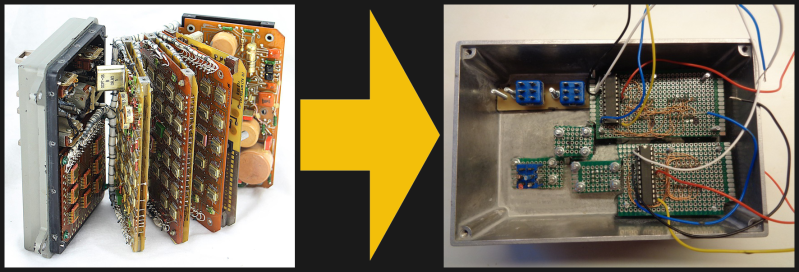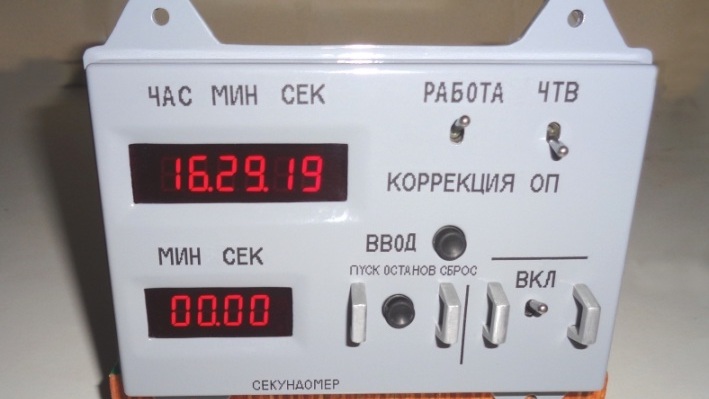If you like the retro look of old Soviet space hardware, then this replica of the model 774H Soyuz digital clock by [David Whitty] might be the perfect accessory for your desk. Forgoing the original stack of ten jam-packed circuit boards, [David] used an Arduino, a GPS receiver, and a handful of other common parts to create a convincing reproduction.

He also made some functional changes to make it better suited as an ordinary clock for us earthbound folk. If you want to take on this project yourself, be prepared for some real metalwork. No 3D printing filament was harmed in building this project. It’s based on a pair of heavily modified Hammond cast aluminum enclosures, with over 1 kg of lead ballast added to give it the appropriate heft of the original. The GPS patch antenna is cleverly hidden on the rear interface connector, but a discrete hole for a USB connector gives away the secret that this isn’t an original. The software (free for non-commercial use) and build notes are available on his GitHub repository.
We covered [Ken Shirriff]’s fascinating dive into the guts of a real Soyuz digital clock back in January. If old space hardware is your thing, you should definitely check out this teardown by [CuriousMarc] of the 653B, the 1960s-era electro-mechanical predecessor to the 774H. Thanks to [CuriousMarc] for bringing this project to our attention.
















Reading the front page blurb “Forgoing the original stack of ten jam-packed circuit..” I was wincing as I came in thinking I was going to read “arduino” but let go a sigh of relief when I saw it at least gets it from GPS. :-D
GPS but not Glonass, what a shame :p
David doesn’t mention which GPS module he uses, maybe he’ll speak up here in the comments. Are modern GPS modules capable of using either system? I wonder if Glonass receivers also send out NMEA messages over the serial port? While Glonass is a separate system from GPS, the applications are similar. If they don’t use NMEA, I would guess they use something similar.
Modern GPS receivers like the neo-m8 can use multiple systems at once. You could for example use GPS, GLONASS and Galileo at the same time.
Seems like SOCs have done both since the 2010s, since practically all Androids say they do Glonass if they do GPS, some even mention Galieo too.
Interesting. Showing my age, the last GPS “module” I used was a PC/104 card chock full of chips. Nowadays I understand the GPS receiver can be but a small sub-circuit within a Qualcomm chip.
It was more a rethoretical question as indeed, the used ublox neo m6 is an old module, capable of GPS only.
Most modern GNSS receiver are now able to receive from various constellation (sometimes simultaneously) and send data in standard NMEA format.
I used an old Ublox Neo 5 GPS module. Later modules will receive GPS/Glosnass/QZSS
Doh. Why didn’t I think of that. I think I have a Glosnass module somewhere that I have never used.
Just out of curiosity, what does the russian text say? “Do not press this button”?
What part? think the bit in the middle says “Budgie Breeding Area only, no Octopus copulation.”
Click on the Github link above. I have a picture with a translation or better still check out [Ken Shirriff]’s link in the text who also has a translation and see the beauty of the original Russian construction.
The real story here is in the construction of the housing. Simply a work of art.
Yes! At first glance I thought the enclosure was a thick plastic nema box.
I’m curious about these dual mode satellite navigation receivers. Do they simultaneously maintain solutions using both constellations? Or do they only operate using one at a time, changing under manual or automatic control?
Yes! Someone did it! I asked Mark a few times if he could take some measurements for a replica, but no news yet :)